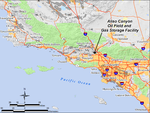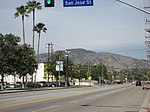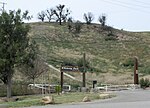Sesnon Fire
The Sesnon Fire (also known as the Porter Ranch Fire) was a wildfire that broke out near the oil fields of Oat Mountain, north of Porter Ranch, California, on Monday October 13, 2008. The cause of this fire was a power line falling onto dry brush near a drainage area. A state of emergency was declared by Governor Arnold Schwarzenegger on October 13 in Los Angeles and Ventura Counties. The fire burned more than 22 square miles (57 km2) and cost US$7.9 million to fight. This fire occurred concurrently two others, one in San Diego County and another at the eastern end of the San Fernando Valley. One person lost their life due to the low visibility on highways because of the smoke from the fire.
Excerpt from the Wikipedia article Sesnon Fire (License: CC BY-SA 3.0, Authors).Sesnon Fire
Limekiln Canyon Road, Unincorporated Chatsworth
Geographical coordinates (GPS) Address Nearby Places Show on map
Geographical coordinates (GPS)
| Latitude | Longitude |
|---|---|
| N 34.3213 ° | E -118.5586 ° |
Address
Limekiln Canyon Road
Limekiln Canyon Road
91326 Unincorporated Chatsworth
California, United States
Open on Google Maps







